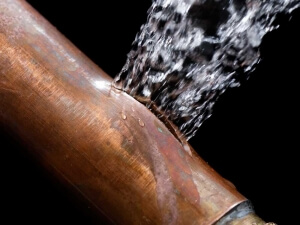As the winter months continue, and temperatures continue to fly below freezing, it’s important for everyone to learn tips on how to avoid freezing pipes. With early detection and proper preparation, you can easily avoid this well-known winter peril.
Pipes that can freeze:
Frozen pipes can occur in both indoor and outdoor areas. Due to their outdoor location, the more common water lines that freeze are outdoor hose bibs, swimming pool supply lines, and water sprinkler lines. The indoor areas are where people tend to forget that they could be at risk. Unheated interior areas such as basements, crawl spaces, attics, garages, and kitchen cabinets that run against exterior walls that may have little or no insulations, are also in danger of freezing.
Contributions to frozen pipes:
There are a few different factors that can play into pipes freezing. Often, we think about the decline in temperature as being the main reason for freezing pipes. But there are other factors to also consider. One of them being the construction of the building. Buildings that are poorly designed and don’t withstand severe weather, as well as the age of the plumbing system in the home can play a huge part in frozen pipes. The quality and quantity of insulation are other key factors to think about. Blow-in or foam insulation added between interior and exterior wall surfaces and studs may actually insulate heat away from pipes, making them more prone to freezing. Lastly, it’s important to consider the fact that power outages could in fact impact your pipes. Most heating systems depend on electricity, so when the power goes off, so does the heat. Of course, it is most important to realize the impact of power outages during the cold winter months when the pipes are more susceptible to freezing without heat as damage could occur before the power is restored.
Preventing frozen pipes:
As the fall comes to an end, and the winter season is soon to begin, it’s important to drain and disconnect all outdoor pipes. For example, be sure to drain the water from your swimming pool, water sprinkler supply lines, hoses, and any outdoor plumbing systems. Using compressed air to blow outlines is an effective way to empty any water that may be left. It’s also important to store away any hoses used outdoors so they’re not damaged during the cold weather. Be sure to close inside valves that supply outdoor hose bibs and keep the outside valve open so any water remaining in the pipe can expand without causing damage to the pipe. Keeping your house temperature set to at least 55 degrees is another key factor in keeping your indoor piping safe. Lastly, you should check for water supply lines that are in unheated areas (examples are listed above) so you can properly insulate these pipes by using specific products like a “pipe sleeve” or installing UL-listed heat tape, heat cable, or similar materials.
What to do if a pipe bursts:
It is extremely important to shut off the water at the main valve if a pipe bursts. Be sure to identify the pipe or pipes that have burst. Try your best to dry things out if you can and document everything that happened by taking photos of the damage/occurrence and writing down everything that has been damaged. Next, contact your insurance company to notify them of your claim. If you have standing water, you should also contact a plumber and property damage company to evaluate and remediate any water damage that may have occurred. If you would like recommendations, please contact ASZ International for assistance.























































